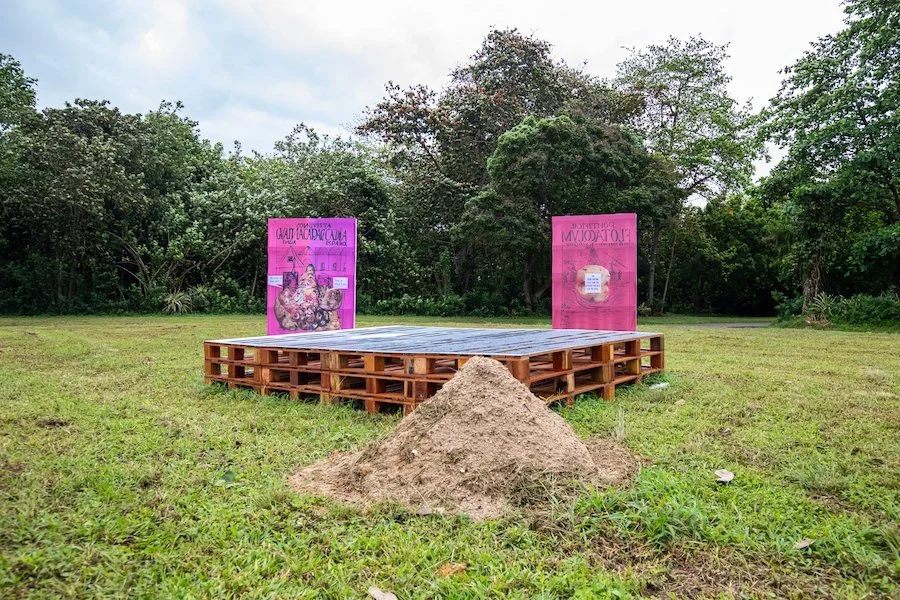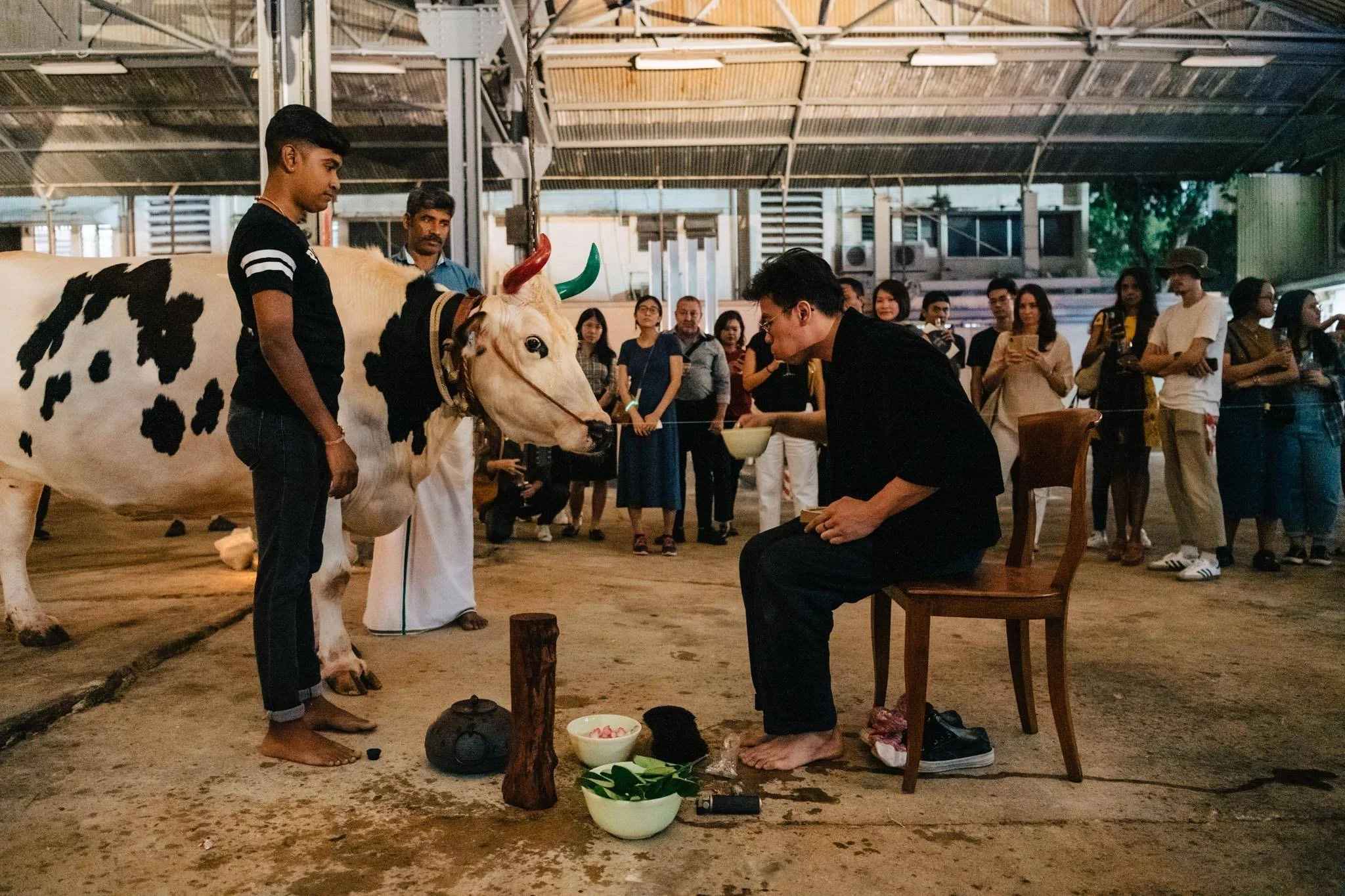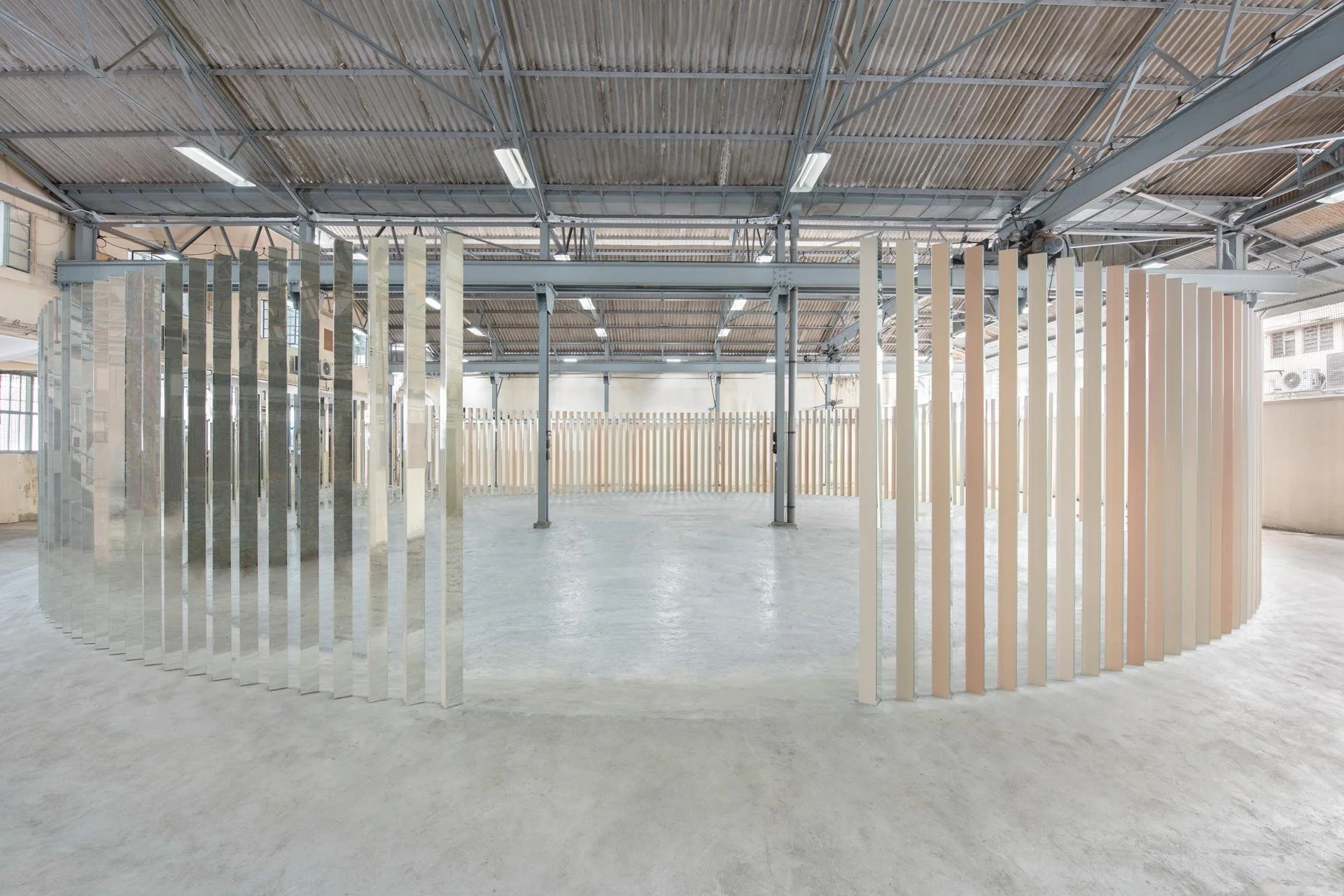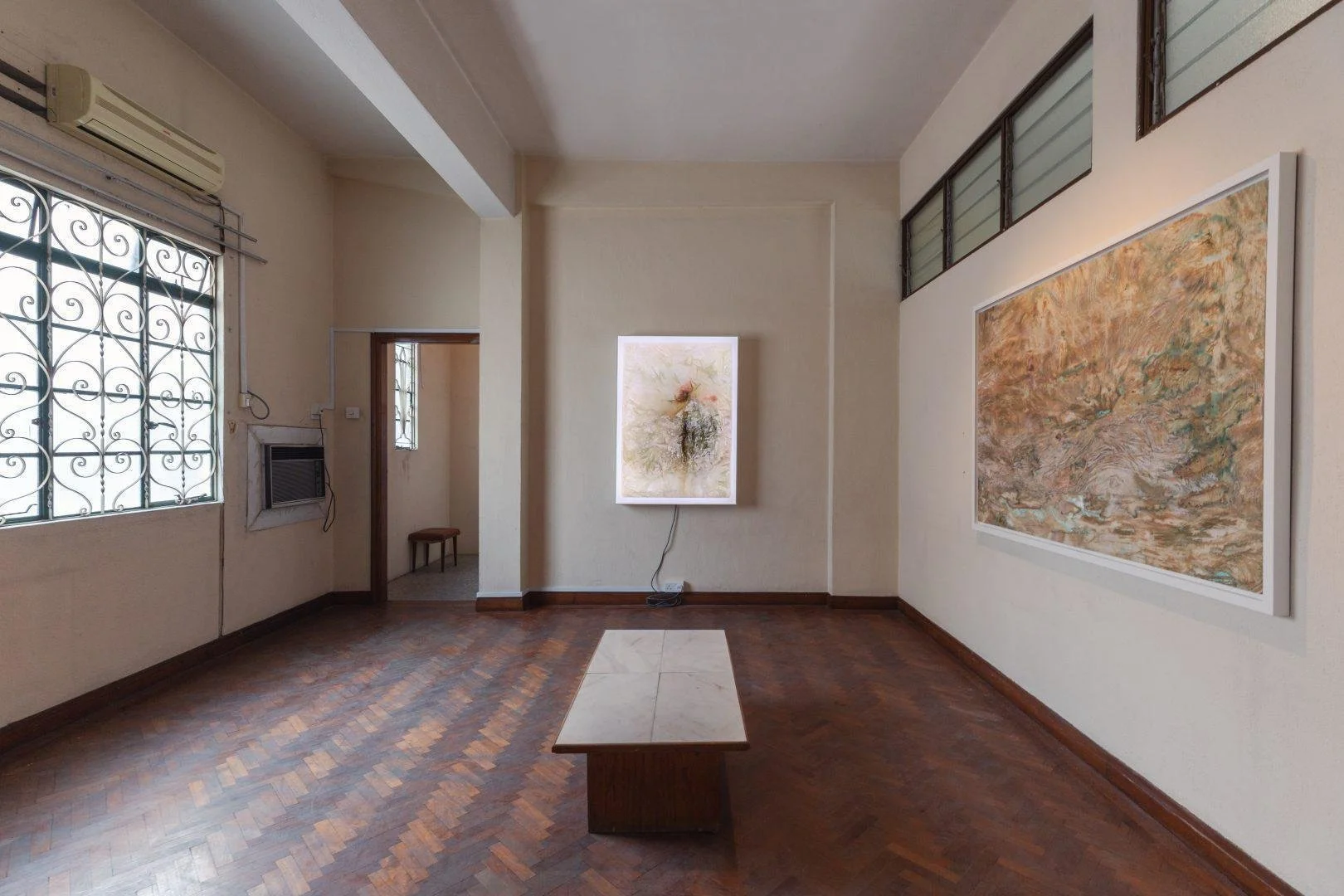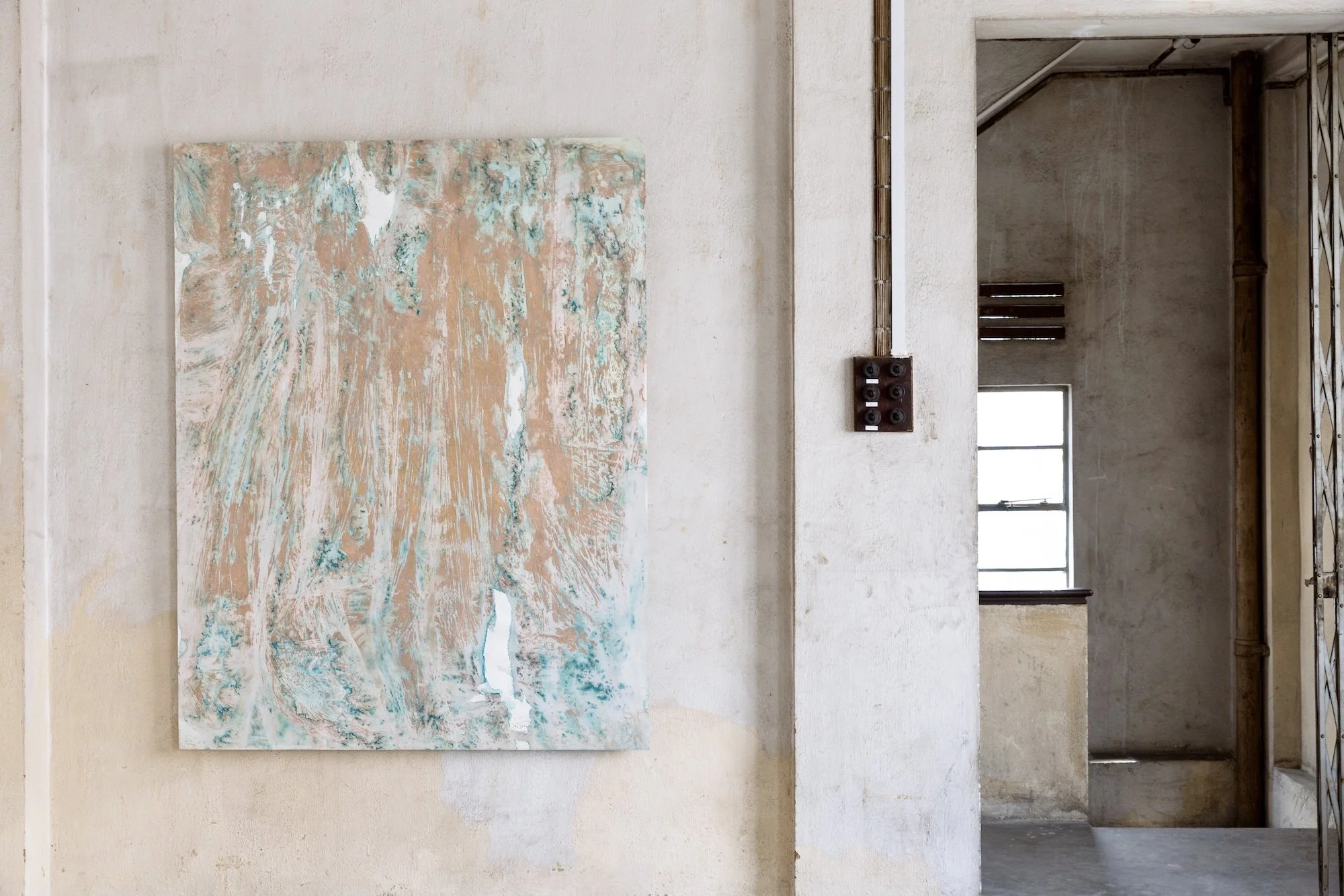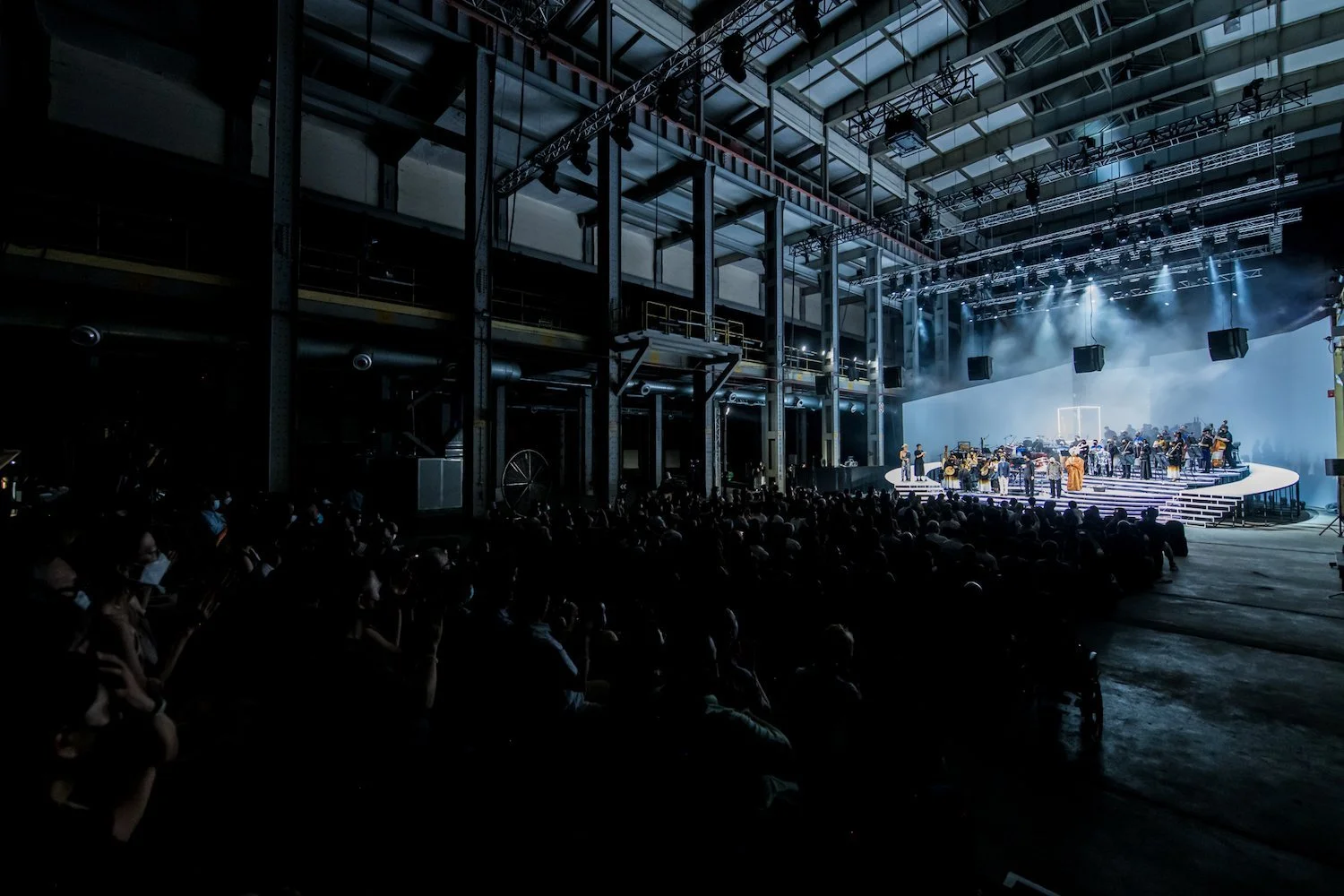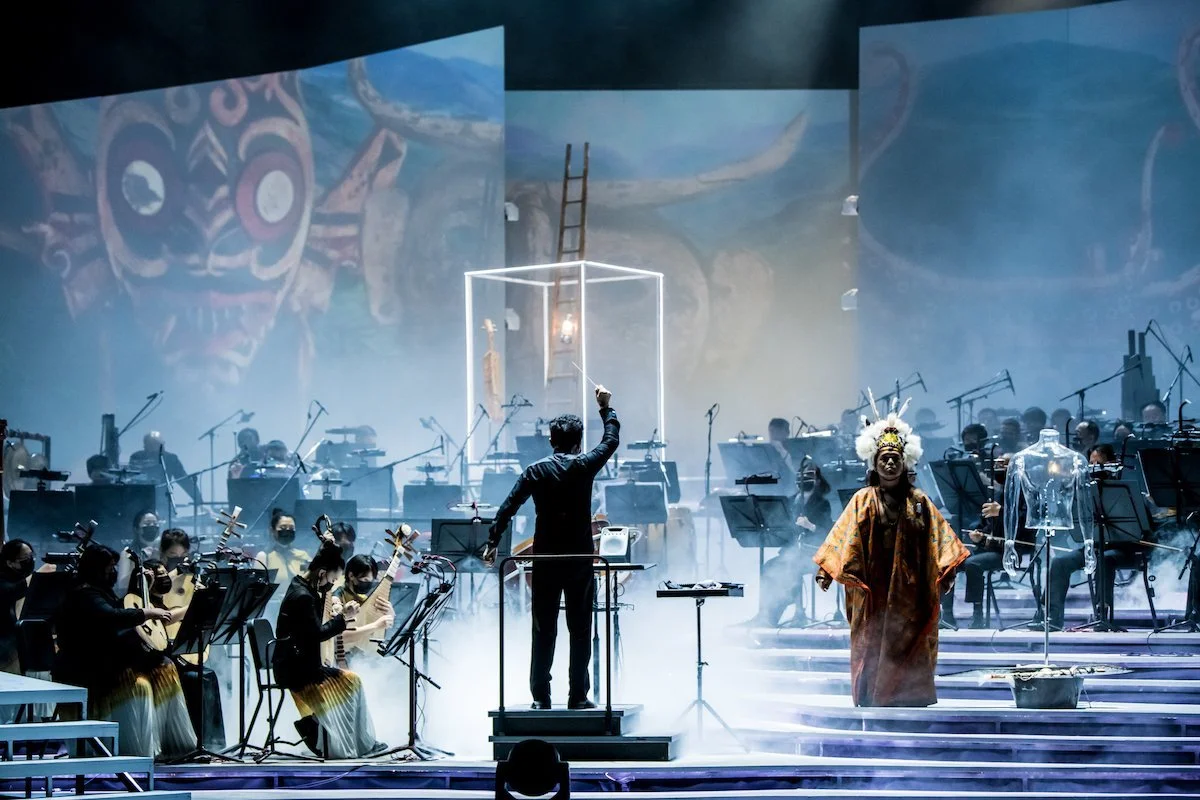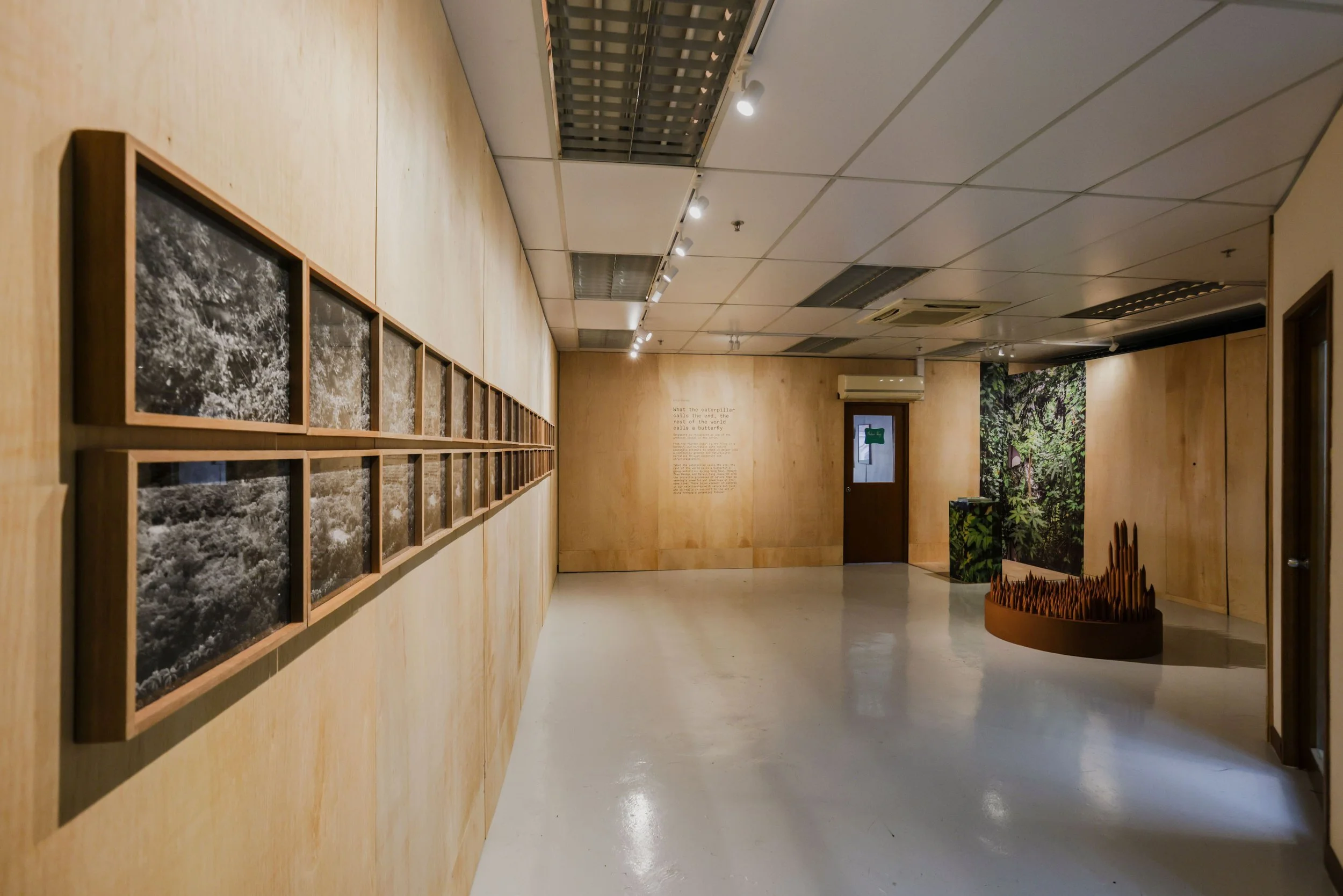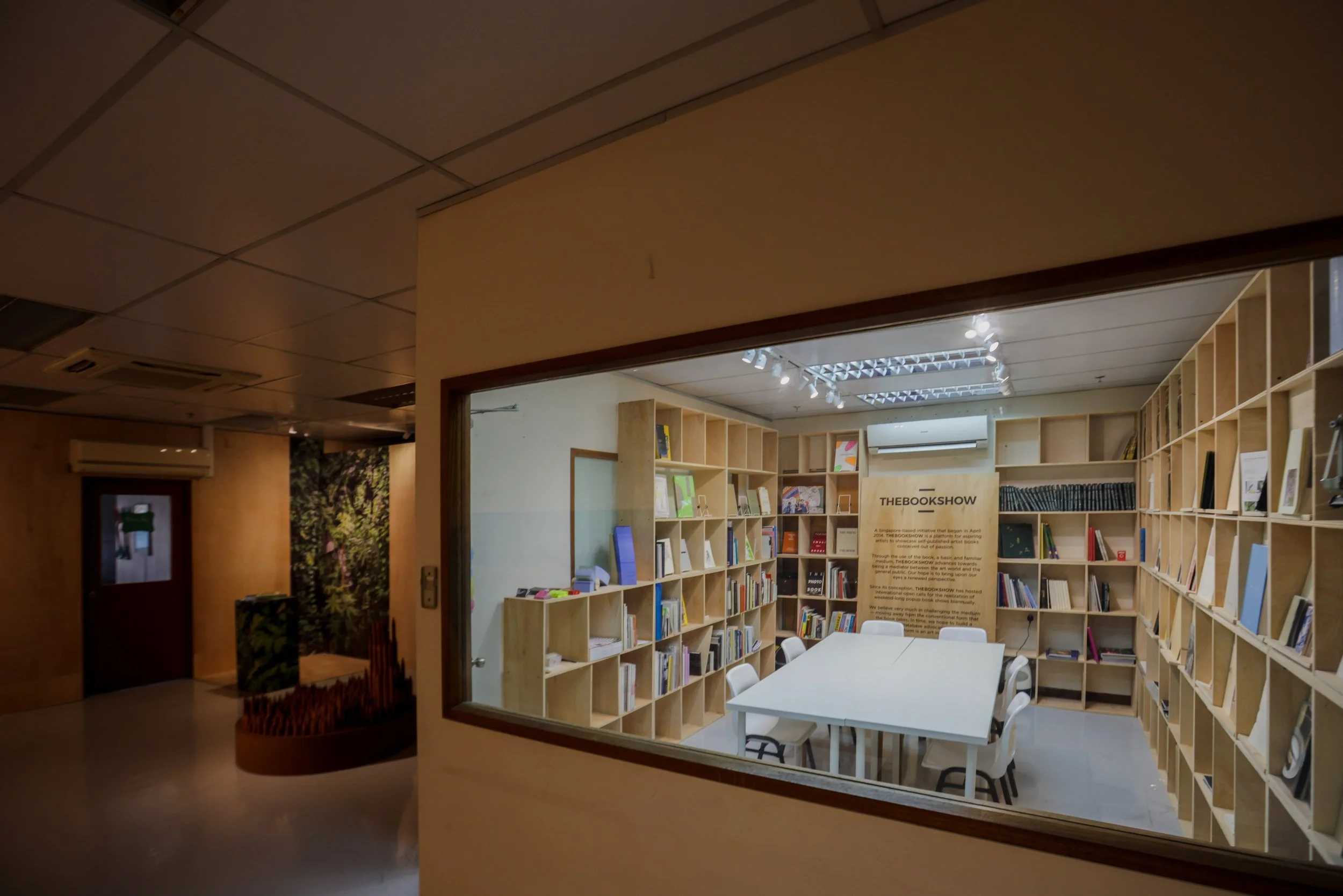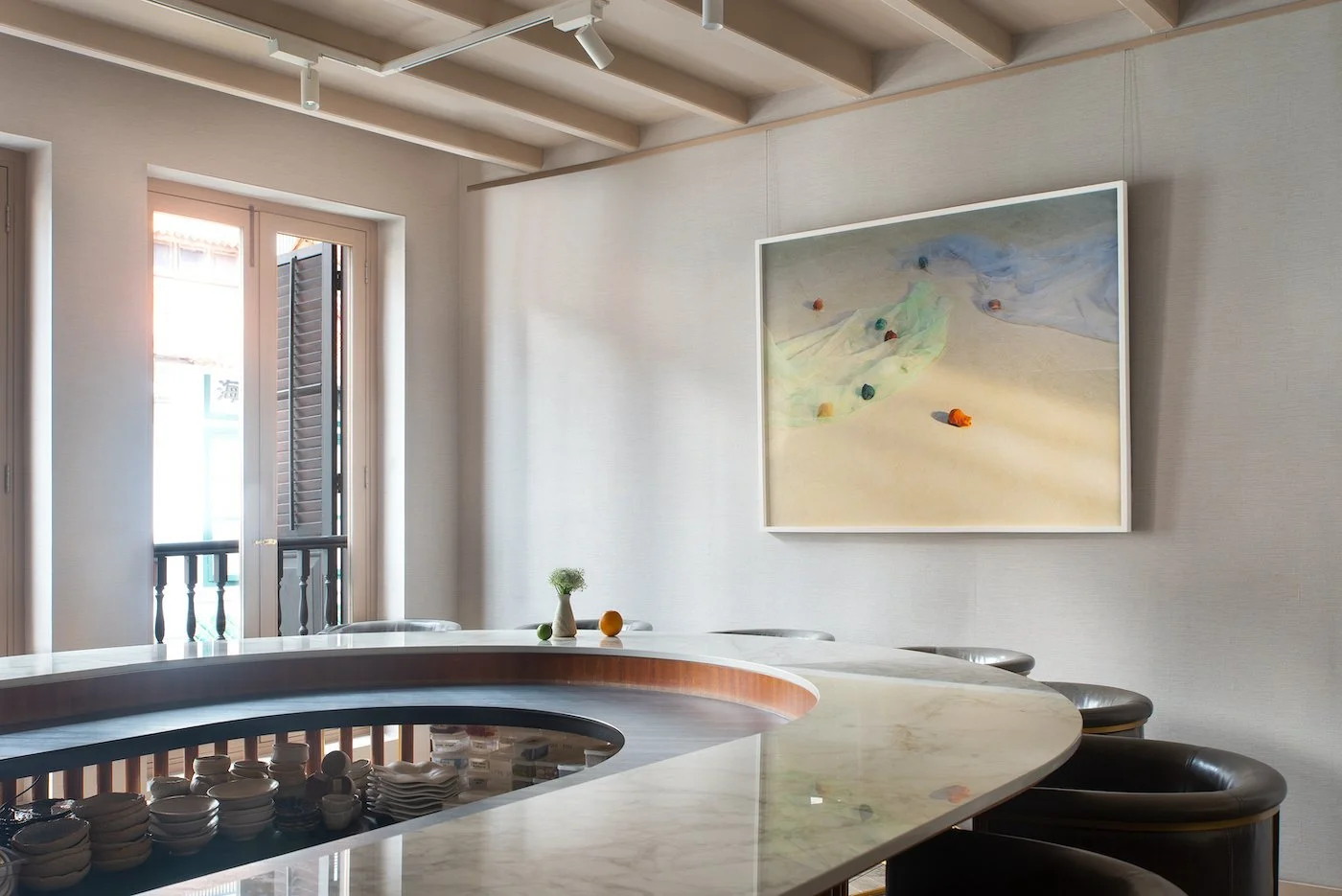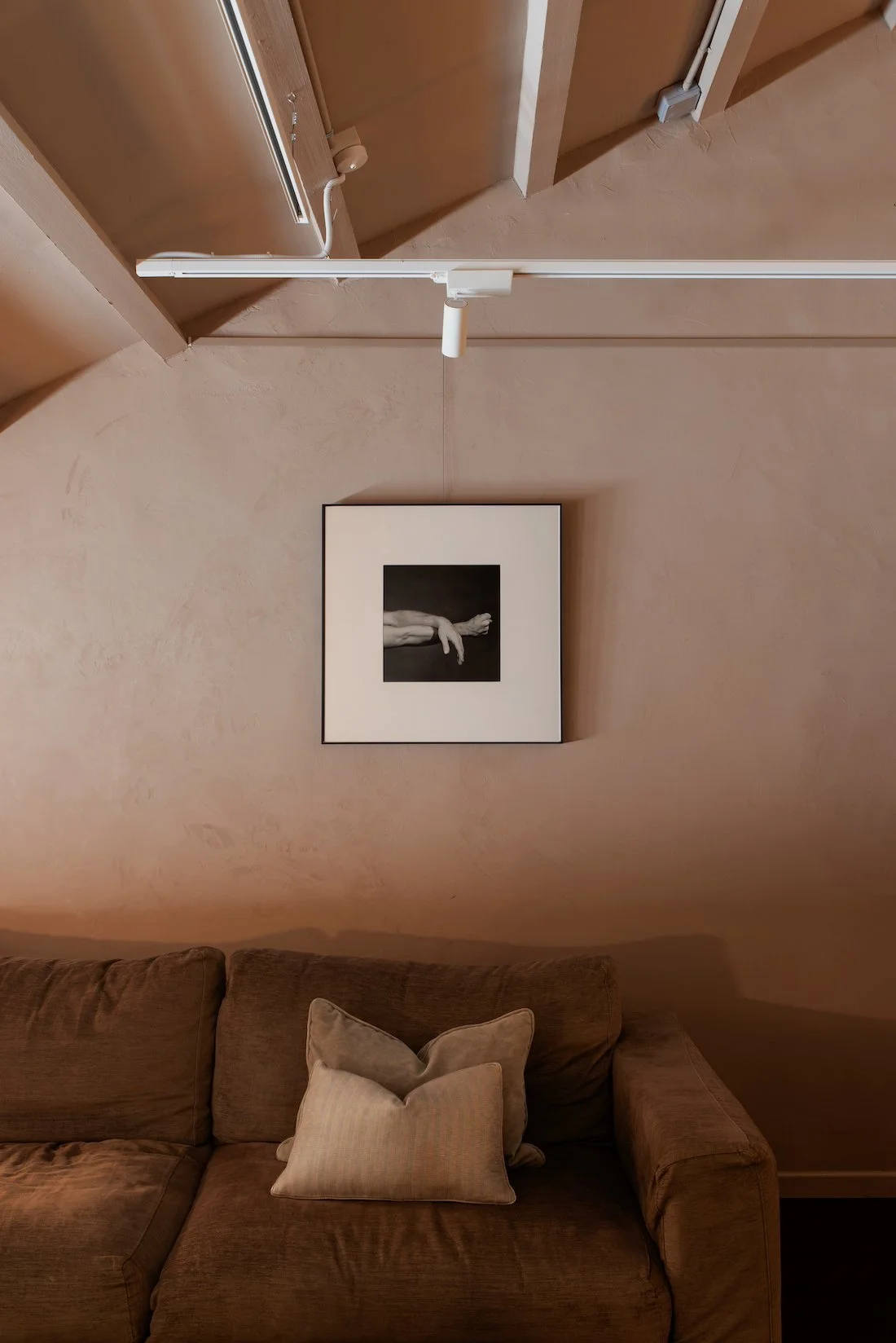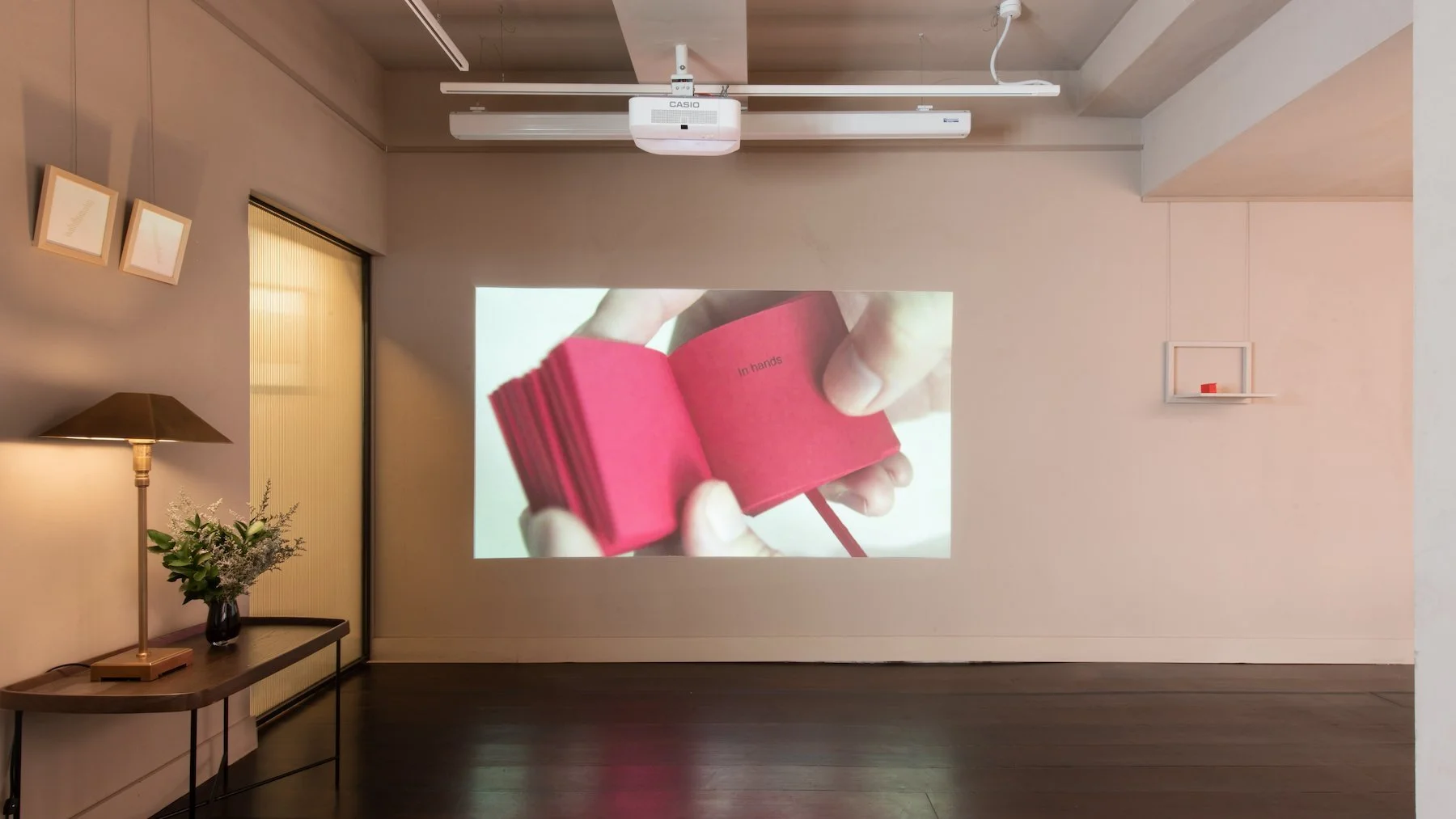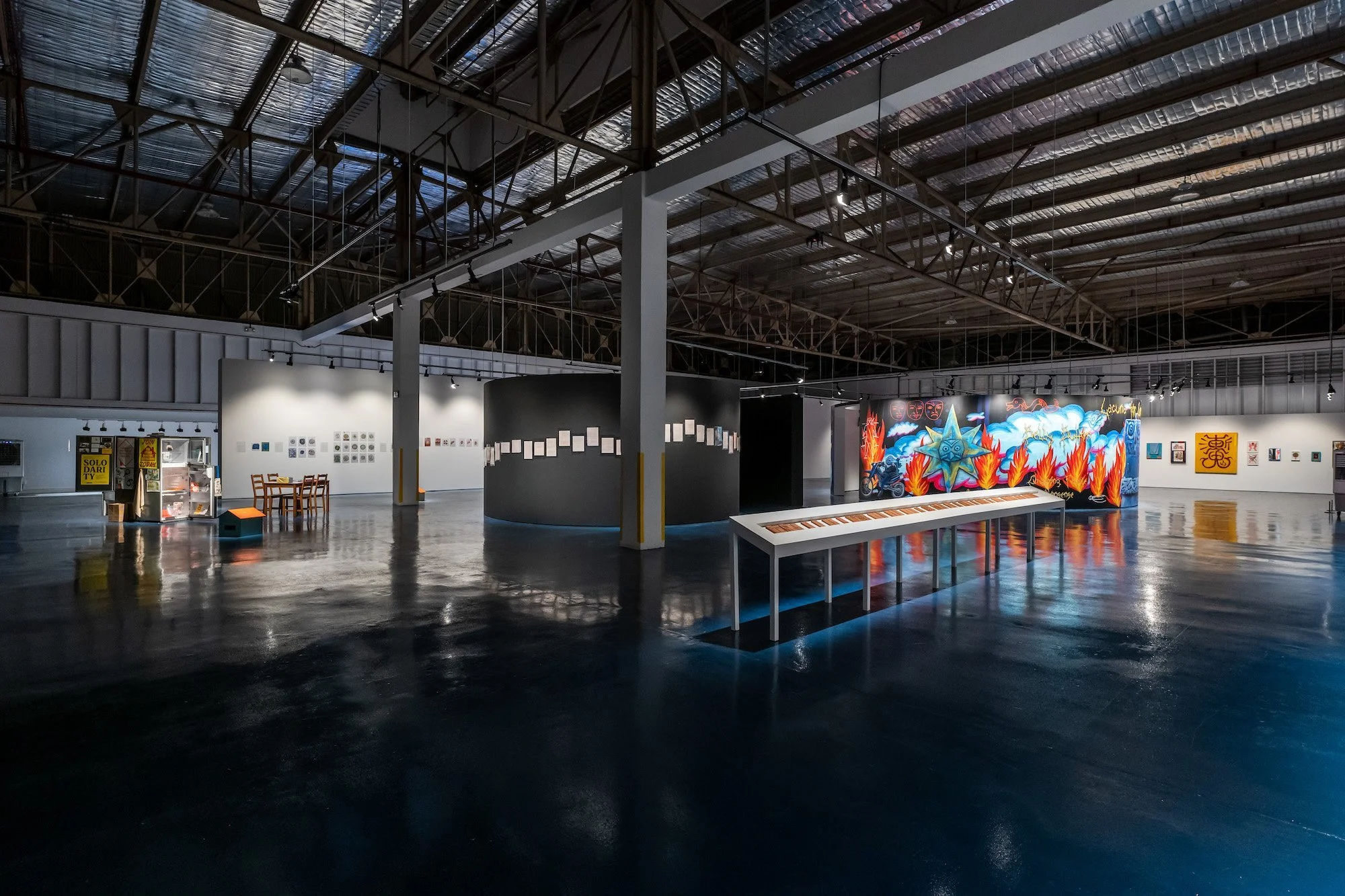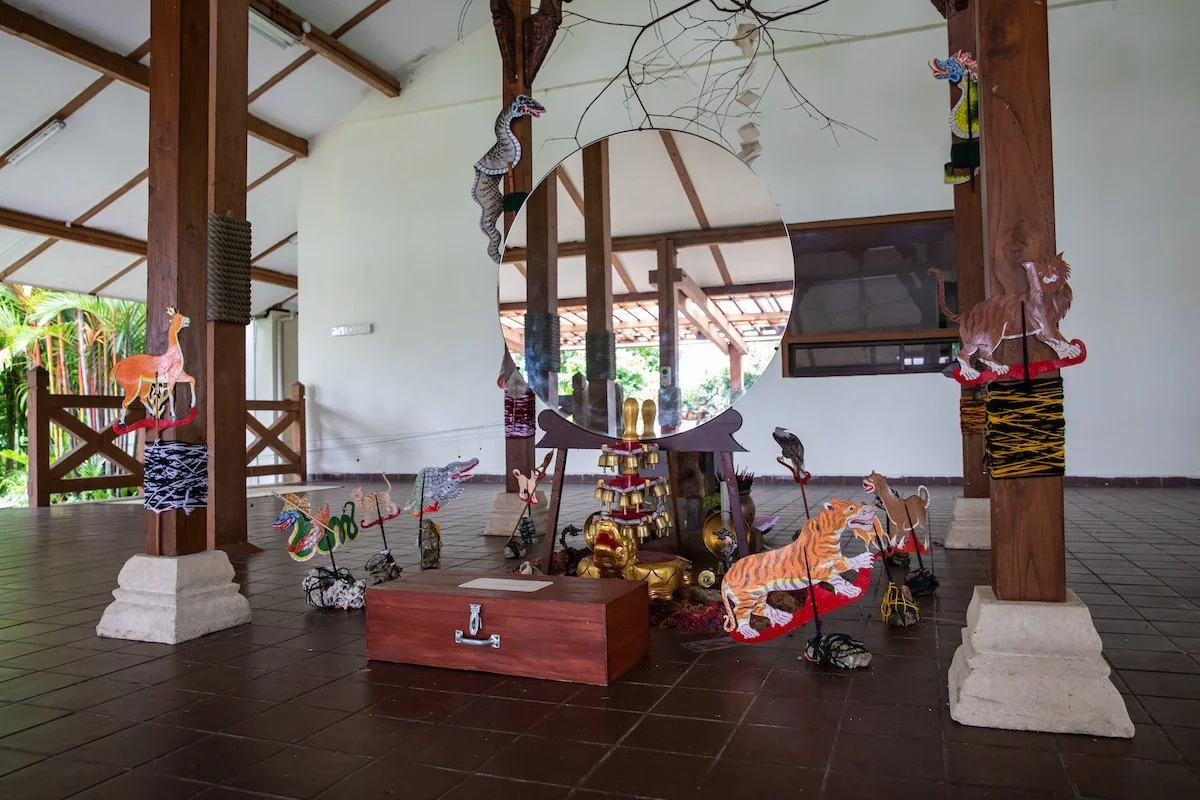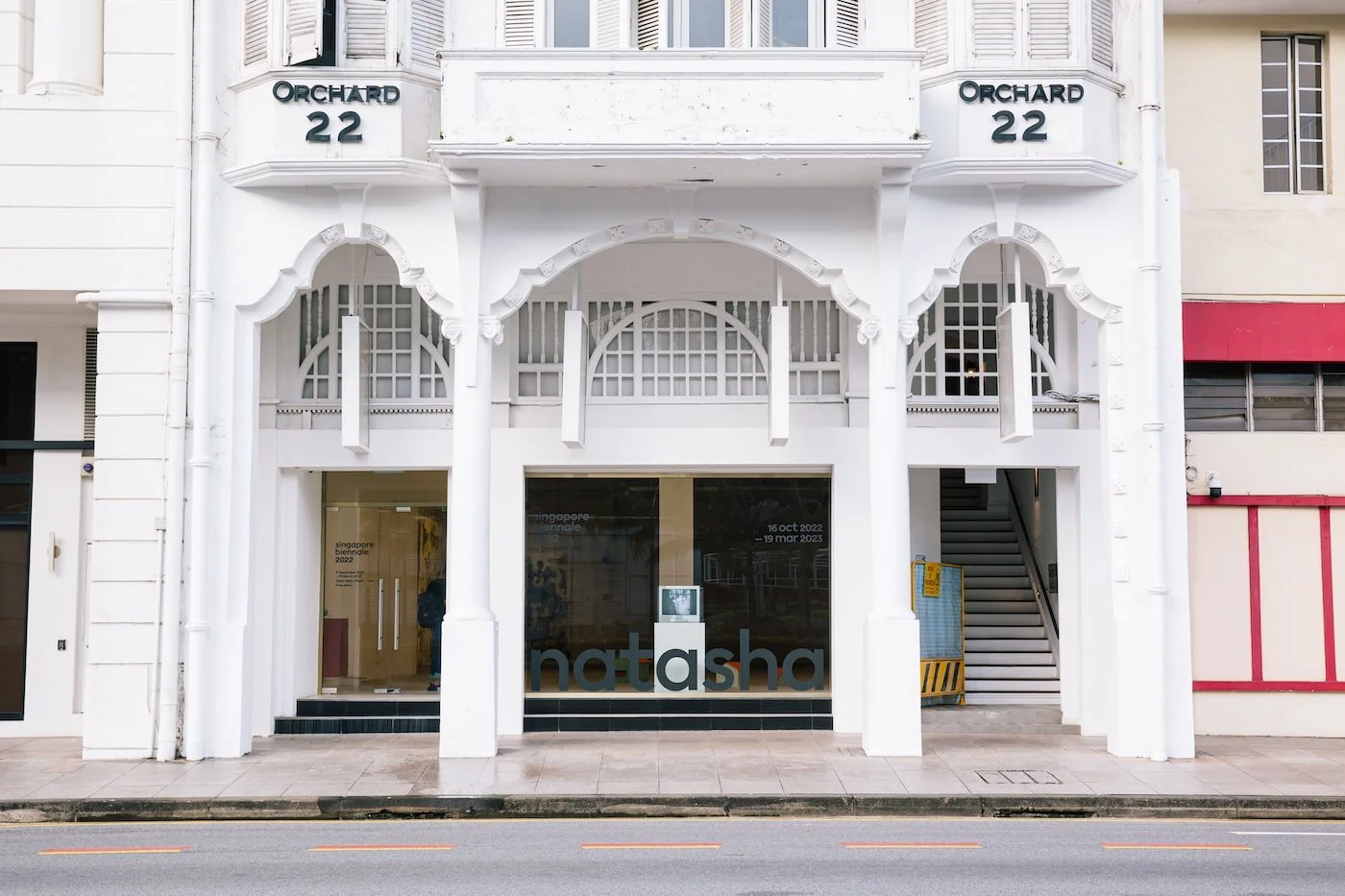Off the Beaten Track
A discovery of unconventional art spaces in Singapore
Åsa Sonjasdotter and Daniela Zambrano Almidón, Papitas Tarpuycha_Earthing Potatoes, 2011-ongoing, as part of Singapore Biennale 2022 named Natasha. Image courtesy of Singapore Art Museum.
The white cube is a space that comes to my mind when I think of where art is usually housed and displayed. White cubes spaces have clean monochromatic walls, structured architectural designs, polished flooring, controlled lighting, minimal to zero environmental distraction, perhaps paired along with some art stanchions and wall texts here and there. These traits are mostly present in traditional gallery and museum spaces, for which art is presented and experienced without any unnecessary distraction.
However, I see that art is no longer limited to just traditional spaces. In recent years, more artists are pushing the limits on what we consider art, and restaging the spaces they use. Consequently, art spaces are no longer confined to their associated physical boundaries.
In this article, I am going to bring you through my journey of exploring art spaces that are out of the norm in Singapore. These unconventional spaces are often originally designed for a purpose other than the storage or display of artworks. Some spaces are larger than others, while some have challenging spatial conditions. Despite these differences, these spaces do not delimit themselves to the standard white cube model, and in turn redefining the relationship between art and the viewer. The list of art spaces mentioned below is by no means exhaustive but I hope it serves as a record of some of the unconventional spaces that have emerged over the past few years.
Wong Lip Chin, Some We Love, Some We Hate, 2020, 2 Cavan Road. Image courtesy of Ahmad Iskandar.
2 Cavan Road
It is rather rare to find raw spaces in Singapore that are reused as art spaces. One of them is the old ship-repairs workshop and warehouse located at 2 Cavan Road. Built in the 1950s, the former warehouse is hidden along a street populated by hardware shophouses, a Chinese health products shop, a hotel and even a seafood house. Spanning about 20,000 square feet, the once manufacturing site for ship repairs was given a new lease of life after property development and investment firm Kheng Leong Company invited the Singapore Arts Club to take over the site in 2020. It was then transformed into a pop-up arts destination for six months as Twenty Twenty, presenting curated exhibitions and arts programmes. These included its first pop-up exhibition titled Strange Things that was held in conjunction with Singapore Art Week 2020.
The ground floor of the building was transformed into the main exhibition site, housing site-specific art installations by about 10 artists. In a way, the works presented in the exhibition represented a range of responses to the history and unique architecture of the building, expanding the art experience to be one that is with the site. Some of the works presented in the exhibition was Singapore artist, Wong Lip Chin’s Unseen (2020), a multisensorial installation piece, made in response to an abandoned altar that was found in the derelict building. Among others was Thai artist Santi Wangchuan’s My Local Way of Life (2016), an installation of hand-woven works that spanned 10 metres in height, which could only be staged in sites like 2 Cavan Road with “sky scraping” ceilings.
Dawn Ng, MERRY GO ROUND, 2020, aluminium, steel, glass, polyurethane paint, 1850 x 1850 x 280cm. Image courtesy of Dawn Ng.
Another prominent work at Strange Things was MERRY GO ROUND by Singapore artist Dawn Ng, who presents her multidisciplinary works frequently within and outside of white cube spaces. Spanning nearly 20 metres in diameter and towering 2.5 metres in height, the monumental artwork was made up of a total of 299 pieces of L-shaped mirrors floor-mounted in a circle. Together, it formed an orbit of reflections and gradient hues as visitors viewed the work in an encircling motion. 2 Cavan Road enhanced the intention of the artist to showcase a work that dealt with time, memory, identity and space. The historical context and spatial qualities allowed the artwork to speak within a new framework.
Of course, not everything can be perfect. On one end, its vast open-aired art spaces and unique structural designs may seem desirable at first glance, but every show has its challenges. Some of the issues included obtaining power for the work, keeping humidity to a minimum, and keeping mold at bay, in addition to insurance and logistical matters. 2 Cavan Road is a great example of a vessel that contains remnants of its previous lives—from the peeling patina of the walls, abandoned furniture to the rust of its ironmongery. There is a conceptual intentionality and visual synchronicity with each work that has been placed in it.
“2 Cavan Road is a great example of a vessel that contained remnants of its previous lives—from the peeling patina of the walls, abandoned furniture to the rust of its ironmongery. There is a conceptual intentionality and visual synchronicity with each work that is placed in it.”
INTO AIR at 2 Cavan Road, Singapore, installation view, 2021. Image courtesy of Dawn Ng.
The World Forgetting by the World Forgot, ASH, at 2 Cavan Road, Singapore, installation view, 2021. Image courtesy of Dawn Ng.
Unconventional art spaces like 2 Cavan Road have also helped artists like Dawn experiment with alternative ways to leverage what the space and its architecture offer. Speaking about the kind of charms raw spaces hold, Dawn says, “All of my work deals with time, memory and the ephemeral in some way or another. That draws me to spaces that serve as a time capsule in an organic way, the spaces which have been left out in our country’s great march towards modernity.” Just last year, Dawn presented her works once more at 2 Cavan Road but this time, in different parts of the building—the upper level and along the staircase. Into Air was Dawn’s solo pop-up exhibition presented by Sullivan+Strumpf Singapore. The exhibition showcased Dawn’s series of works that primarily deal with time and how it can be documented and manipulated.
Singapore International Festival of Arts Opening Night: MEPAAN, 2022. Image courtesy of Arts House Limited. Photo by Debbie Y.
Pasir Panjang Power Station
Defunct industrial spaces and buildings are ideal as re-purposing sites for artistic presentations because of the abundant access to empty spaces and natural lighting. These qualities provide a perfect haven for large-scale experimental displays and performative works. Pasir Panjang Power Station is a great example of such a place. It was Singapore’s second power station and once played a significant role in generating energy and powering Singapore’s intensive industrial drive in the 1960s, and was decommissioned in 1997.
Singapore Chinese Orchestra, The Tuyang Initiative on stage. Image courtesy of Arts House Limited. Photo by Debbie Y.
In 2018, the Singapore Land Authority collaborated with The Local People to transform the power station into a community space for local artists, craftsmen and musicians to showcase their work. In 2022, it was used to host the Singapore International Festival of Arts (SIFA), featuring the festival’s opening performance MEPAAN accompanied by a photographic exhibition by acclaimed Singaporean photographer, Sean Lee. SIFA 2022’s programme lineup also opened a wave of new experiences in other unexpected venues from a venue-specific art experience at Pulau Ubin to SIFA’s virtual venue and creation platform, Life Profusion.
Song Nian, Robert Zhao and Marvin Tang, What a caterpillar calls the end, the world calls a butterfly, installation view at Field Studies, 2021. Image courtesy of Marvin Tang.
THEBOOKSHOW, presented at Field Studies. Image courtesy of Marvin Tang.
Field Studies
Other than the practical functionalities of how alternative spaces operate, most of these spaces are differentiated from galleries or museums in the sense that they are primarily not-for-profit, and rely minimally on or not at all on institutional support. Though most of these spaces are usually small, they tend to be perfect for presenting more experimental works.
A new space that joined the scene is Field Studies. Located on the 10th floor of Lam Soon Industrial Building at 63 Hillview Ave, this 110-square-metre space was once used as a small office and later became an artist studio used by Singapore artists Ang Song Nian and Robert Zhao. The space also holds THEBOOKSHOW, a platform founded by Song Nian in 2014, which provides opportunities for artists and photographers who are interested to self-publish photo books. The independent art space Supernormal is also currently co-sharing the space. In this way, the space has become more fluid and versatile, hence providing more autonomy and freedom for artists to decide what they want to do.
Field Studies also allows Song Nian and Robert to showcase works of artists who share similar research interests. They presented their inaugural show What a caterpillar calls the end, the world calls a butterfly, featuring new works by Song Nian, Robert Zhao and Marvin Tang. It later showcased Berny Tan’s curated three-part-show, Three Sketches for a Lost Year and most recently, thesupersystem (SSYSTM)’s research project Alam Se—Kita. Moving ahead, Song Nian and Robert also hope that the art space can offer more than a space which artists can rent, Song Nian adds, “We want the works that are being shown here to still be quite consistent with what we do…. or whose practice and works we can relate to in terms of the thematic or research interests.” Independent art spaces make the whole experience of looking at and experiencing works feel more organic, as complements to shows in galleries or institutions. In essence, artist-run spaces provide more alternatives and flexibility to the artists.
“Independent art spaces make the whole experience of looking at and experiencing works feel more organic, as complements to shows in galleries or institutions. In essence, artist-run spaces provide more alternatives and flexibility to the artists.”
Field Studies is a self-funded space where Song Nian and Robert cover the venue rental and utilities, though participating artists do sometimes help to pitch in. Field Studies’ location within an industrial building works well for an art space because, for example, he does not have to worry transporting the works as the cargo lifts are already available. In addition, the space can open and close as they please. Its design also allowed for more possibility of staging small showcases, with a common area situated in the middle, one back room and the other smaller room used for THEBOOKSHOW. Like Field Studies, other art spaces that function between the models of an artist studio and gallery space are Starch (by Moses Tan), Comma Space 逗号空间 (by Wang Ruobing and Chen Sai Hua Kuan), Temporary Unit (by Gideon-jamie) and Sculpture 2052 (by Yeo Chee Kiong), just to name a few.
Chen Wei, sock balls, 2020. Image courtesy of Appetite. Photo by Jonathan Tan.
Appetite/Nouri
Art can be experienced in our everyday lives, and infiltrated the places that we frequent. These are often not where we have imagined art to be housed. Imagine walking into a café or restaurant and then fortuitously chancing upon some art pieces. These types of experiences shift away from the four walls of a museum and interweave with culinary food, where the arts and music bring a whole new level of sensory experience. Appetite and Nouri were born as a response to these more traditional art spaces.
Chef-owner Ivan Brehm opened his one Michelin-starred restaurant Nouri in 2017 and a year later, he founded Appetite, which started out as a test kitchen. In April 2020, Appetite evolved into a cross-disciplinary space and research arm of Nouri, where careful research is translated into food dishes, and in further dialogue with the art. The idea was to create spaces that would allow art to be enjoyed outside of the transactional and perhaps more technical environment of a gallery. The hope is that by offering guests an intimate, comfortable and not time-bound experience of works, a more comprehensive appreciation of the works could emerge.
“The idea was to create spaces that would allow art to be enjoyed outside of the transactional and perhaps more technical environment of a gallery. The hope is that by offering guests an intimate, comfortable and not time-bound experience of works, a more comprehensive appreciation of the works could emerge.”
Robert Mapplethorpe, NYC Contemporary Ballet, 1980. Image courtesy of Appetite. Photo by Jonathan Tan.
Genevieve Leong, a list of relationships, 2021. (Centred) Lesley-Anne Cao, Bonsai, 2022/2018. Image courtesy of Appetite. Photo by Jonathan Tan.
Located on a three-storey shophouse at the end of Amoy Street, the first floor houses Nouri restaurant. An inconspicuous door along its side leads through a narrow stairway to the second floor which sits its research collective, Appetite. This comprises an art gallery and a research and development kitchen. Occupying the space on the third floor is Appetite’s record music library, which also holds programmes such as talks.
In my visit to Appetite’s latest exhibition, Mise en Place, I knew at first glance the art experience would not be an ordinary one. The environment felt welcoming and cosy as soon as I stepped into Appetite. It was akin to being in someone’s home. Artworks are placed near a wine chiller, along a cosy narrow walkway, and within an omakase-style kitchen. The exhibited works are mainly wall-based works, partly due to spatial constraints of the venue. Unlike a typical gallery setting, there was minimal to no text on the walls, except for small accompanying labels of the artworks and artists names, with individual QR codes that led visitors to find out more. It was evident that the focus was not only on the artworks and the exhibition interacts with everything else that the space carries and holds. As Art Lead and Curator at Appetite, Clara Peh adds, “The exhibition is in conversation with the space, as much as it is in conversation with the viewers and guests, the music flowing through the room, and so on.”
At Nouri, scenes of patrons interacting with each other, the staff and space are common. For some people, this can be considered as a distraction, but Ivan believes that it is a more realistic way to contend with art, allowing it to live, breathe and perhaps interact with the dynamism of human experiences. I cannot agree more. Such spaces like Appetite are about bringing people together, evident through Ivan’s “Crossroads” approach to food and thinking where no one component exists in isolation. Clara adds, “I think spaces like Appetite provide a connection point between those in the art world and those who are looking to be brought into one space, where further connections and bridging can be made, and explore more ways of bringing art into different parts of our life.”
Level 5 Gallery, Tanjong Pagar Distripark, installation view. Image courtesy of Singapore Art Museum.
Tanjong Pagar Distripark
Singapore Art Museum’s (SAM) is now located at Tanjong Pagar Distripark, a historic shipping port area in Singapore, which may be a surprising venue to seek art. Part of SAM’s new strategic direction, it includes infusing art in unexpected and everyday spaces. As a practicing curator, I cannot agree more with the intent of not confining art experiences to white-walled spaces. In this instance, SAM has successfully transformed the warehouse space into one that can exhibit art, with an accompanying view of containers and port activities. The first floor houses the main museum space with two expansive climate-controlled gallery spaces that feature ceilings as high as 6-metre, akin to those found in former warehouse spaces like 2 Cavan Road. There is also a café bookshop and a multi-purpose hall for programmes and events. The cargo lifts bring you to the SAM office and residency space as well as other commercial art galleries on Level 3. The fifth floor is a malleable open space, now holding exhibits of the Singapore Biennale named ‘Natasha’. Wandering between these spaces can be an interesting journey by itself. I often might find myself adjusting to the ambient temperatures and sounds as I traverse through the vast gallery spaces.
Zarina Muhammad, Moving Earth, Crossing Water, Eating Soil, 2022, at St John’s Island. Image courtesy of Singapore Art Museum.
Singapore Biennale 2022, Natasha, at 22 Orchard Road. Image courtesy of Singapore Art Museum.
Currently in its seventh edition of the Singapore Biennale and conceived as exploratory spaces for visitors to wander and converse, Natasha not only resides in its homeground galleries at the Tanjong Pagar Distripark, but also across several other diverse locations in Singapore. Many of these locations are beyond the traditional gallery settings. They span city-centric locations like 22 Orchard Road, International Plaza, SAM & 8Q Hoardings, Sentosa Cove Village, to everyday spaces such as Yan Kit Playfield and Jurong Regional Library. In addition, art activations are also exhibited on surrounding small islands like St John’s Island, Lazarus Island, and attraction spot such as the Singapore Flyer.
Natasha is an ideal embodiment of SAM’s mission in bringing art outside of the museum. Through framing Natasha as an intimate and collective journey across Singapore with artists, collaborators and audiences, the biennale serves to re-discover different perspectives of viewing and the transformative potentials of art and our relationships with it. Art is now infused into the everyday and made accessible to different communities. Every so often, unconventional art spaces leverage on the multiple possibilities in how we imagine, look, and think of art. In Singapore where the relationship with the arts was not built organically, there is more that needs to be done to empower the arts ecology. One such way is to connect the local communities in reimagined ways that expands beyond the traditional framework of engaging with art. Hopefully, with the emergence of unconventional art spaces, it will not only encourage more art discourse, but also cultivate interactions between art and its audiences.

